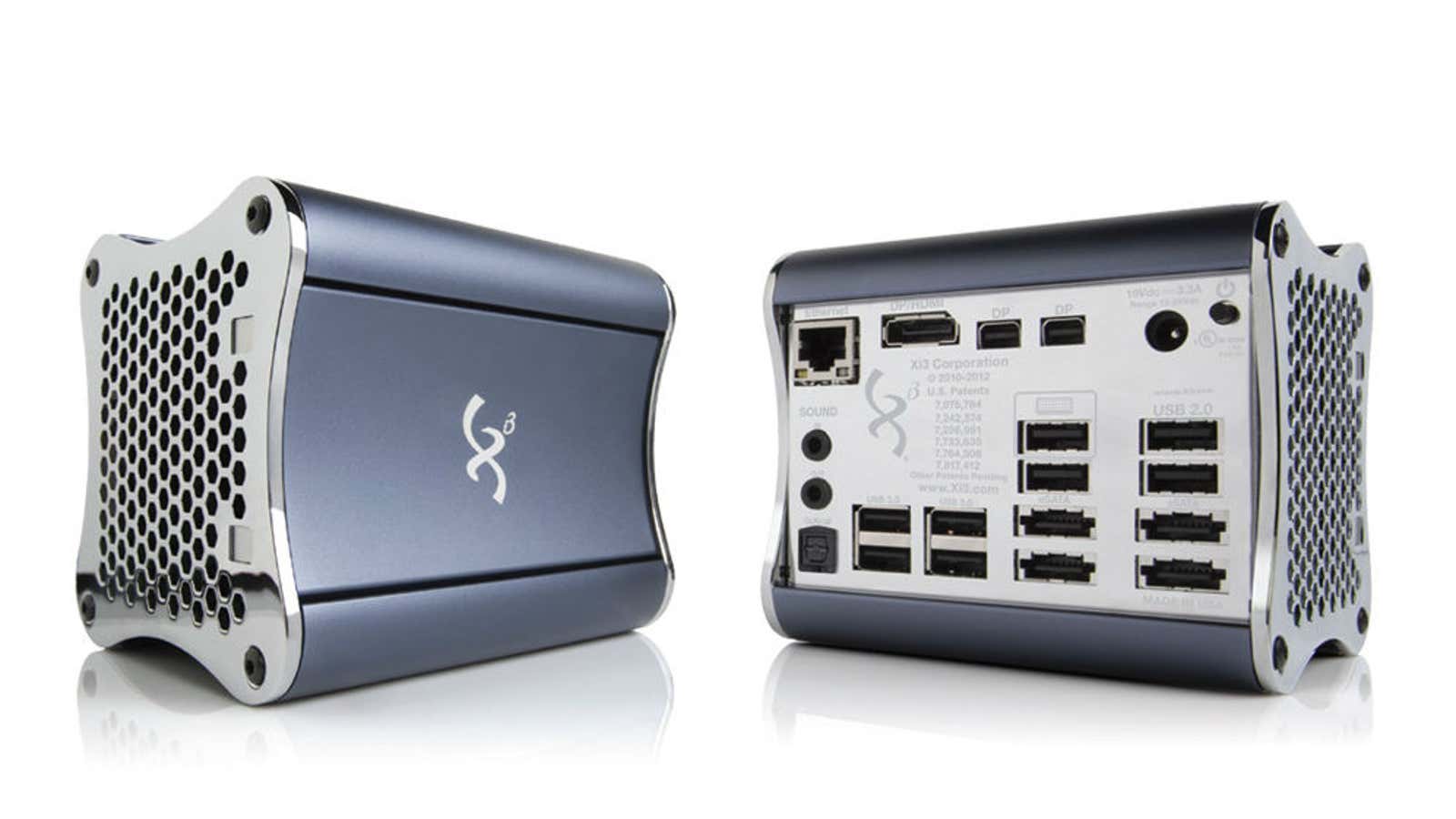At present, mainstream media consumption breaks along the lines of things we watch and things we play. And most companies think the future will look that way, as well. In that scenario, over-the-air network and cable TV will gradually give way to set-top boxes, while video gaming will develop around for-pay downloading services.
But a software company called Valve sees things differently. The set-top gaming device that it unveiled at a tradeshow last week dissolves that distinction, letting users slip between digital media, games and cable TV using pretty much any screen in their home, TV or otherwise.
This is a radical idea. In fact, it could fundamentally change home entertainment. As it is now, set-top boxes are married to a single TV. By contrast, Steam Box, as Valve’s set-top gaming device is known, allows media to go where its users go—or, to be precise, wherever their TVs and computer monitors are. This means someone would be able to, say, watch an episode of Netflix-streamed Portlandia on his bedroom PC, resume watching on his living room HD TV screen over dinner, pause the show to launch a round of Call of Duty while taking a call—and all while checking his email and Twitter feeds on the integrated web browser. In short, the media we download and stream would no longer be confined to a single device or device type.
However, this revolution is far from a done deal. In fact, it’s not even clear the company realizes Steam Box’s broad-based potential, at least based on the limited info on the product (Valve has been very hush-hush about the whole thing). Mind you, this isn’t wholly surprising given that Valve’s brand cachet and marketing channels are strongest with PC gamers—and more or less non-existent with everyone else.
But Steam Box’s true appeal lies in the convenience of a unified home digital media system—and only to a much lesser extent in making Valve’s for-purchase video game selection available on any screen in the house. For this reason, Valve might have to shun the intuitive route and focus on selling non-gamers on Steam Box, as opposed to its current core audience of PC gamers. It will, in other words, have to market Steam Box as a set-top box first, and a gaming device second.

Looking beyond gaming
The reason that gamers are a riskier audience lies in the great gamer divide between allegiance to PCs or game consoles, which in some ways boils down to preference for keyboards versus joysticks. On one side are the PC/Mac gamers; Valve already has a loyal following of these through Steam, Valve’s online game platform. On the other side of the fence are game console players who buy games mostly in disc format. As gamers know, the two generate vastly different playing experiences—a lot of that due to the preference for keyboards among PC/Mac gamers versus that for controllers among console owners.
Valve may already have an easy audience among the PC/Mac crew, but budging console gamers from their Wiis or Xboxes will be hard, as doing so turns their hardware and software investments into sunk costs. Winning them over will also depend on replicating their gaming experience, including, perhaps, the ability to use controllers instead of keyboards. In anticipating this, a previous product of Valve’s swung too far in the other direction. The company optimized Big Picture–a system that allows gamers to hook up Steam to their TV using an HDMI cable–for the controllers, which, by the company’s own admission, alienated its core PC/Mac audience.
That Valve chose to lean toward controllers hints at how difficult it is to carve out some middle ground—and it remains unclear whether it will be able to get closer to doing so with Steam Box. While the device’s users will have the option of using keyboards to play their favorite games on a big screen TV, Valve CEO Gabe Newell is already talking about how much emphasis Valve will put on Steam Box controllers.
Will Valve alienate its core audience?
Marketing the Steam Box primarily as a set-top box will have its downsides, of course. Chief among them is that it might discourage gamers from purchasing the product. Plus, there may well be too few non-gamer early adopters to drive sales. But if the Steam Box does take hold, its implications for both the set-top box and video games industries are potentially disruptive. Current set-top box makers like Roku, Boxee and Apple will be need to develop competing products, and, depending on how many gamers make the leap to Steam Box, build or license a downloadable video game library. The impact to the video game industry could be even more dramatic. Consoles, for example, could become obsolete. In addition, much in the way that smartphones managed to make casual gamers out of us all—think Angry Birds—Steam Box could widen the market for video games by making them more accessible to a formerly “non-gamer” user base.
The Netflix-ization of home entertainment
That might seem like a disproportionately seismic shift from a single software feature—particularly for one that people aren’t even aware they might want. But think about Netflix: when the streaming company first came onto the scene, most of its customers rented DVDs via snail mail. As Netflix subscribers have discovered the convenience of streaming, that number has dropped considerably. That conversion turned Netflix-streaming into the TV viewing standard for North American teens and twenty-somethings. It might seem like a no-brainer now, but how many of these people longed for instantly available laptop viewing before Netflix added the service onto its DVD mailing service platform?
Of course, the latent habits of oblivious customers are impossible to anticipate. Valve’s Newell seems comfortable with testing Steam Box against this phenomenon, though. “If you do something that is cool, that’s actually worth people’s time, then they’ll adopt it,” he told The Verge. ”If you do something that’s not cool and sucks, you can spend as many marketing dollars as you want, [they] just won’t.”
